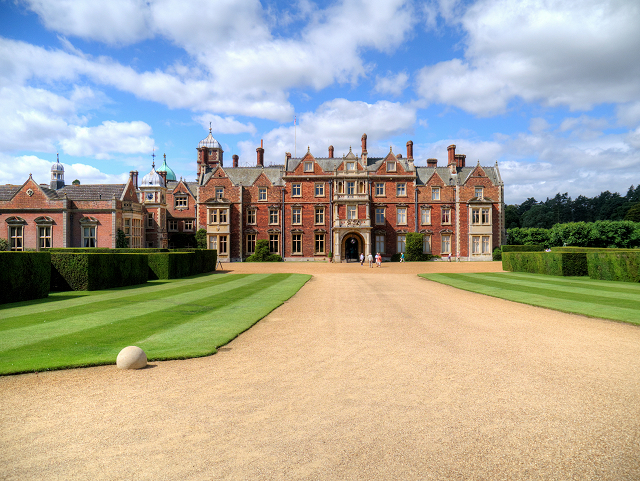|
Flag Of Norfolk
The flag of Norfolk is the flag of the Counties of England, English county of Norfolk. The flag consist of a vertical bi-colour of gold and black, with a white bend (heraldry), bend bearing nine black ermine spots alternating between pairs and singles. It was officially registered on 11 September 2014 as a traditional county flag, following a campaign by Norfolk resident Dominic Victor Maverick Smith. __TOC__ Design and symbolism The flag's design is the banner of arms attributed to the first Earl of Norfolk, Ralph de Gael. This 12th-century design has been associated with the county ever since, appearing on maps and books and of course forming the basis of the county council arms awarded in 1904. It is thought that the ermine bend (the diagonal stripe from top left to bottom right) found in the design may be a reference to Brittany, where Ralph was Lord of Gael as the ermine is a common local emblem such that it features on the Flag of Brittany, Breton flag. This ermine patter ... [...More Info...] [...Related Items...] OR: [Wikipedia] [Google] [Baidu] |
Flag
A flag is a piece of fabric (most often rectangular or quadrilateral) with a distinctive design and colours. It is used as a symbol, a signalling device, or for decoration. The term ''flag'' is also used to refer to the graphic design employed, and flags have evolved into a general tool for rudimentary signalling and identification, especially in environments where communication is challenging (such as the maritime environment, where semaphore is used). Many flags fall into groups of similar designs called flag families. The study of flags is known as "vexillology" from the Latin , meaning "flag" or "banner". National flags are patriotic symbols with widely varied interpretations that often include strong military associations because of their original and ongoing use for that purpose. Flags are also used in messaging, advertising, or for decorative purposes. Some military units are called "flags" after their use of flags. A ''flag'' (Arabic: ) is equivalent to a brigad ... [...More Info...] [...Related Items...] OR: [Wikipedia] [Google] [Baidu] |
Association Of British Counties
The Association of British Counties (ABC) is a non-party-political society formed in 1989 by television personality Russell Grant to promote the historic counties of the United Kingdom. It argues that the historic counties are an important part of Britain's cultural heritage and as such should be preserved and promoted. It also proposes that there be a clear official distinction between the historic counties and the administrative units known as counties—first described as a separate entity in the Local Government Act 1888. Definitions and county boundaries recognised by the Association The ABC recognises ninety-two historic counties of the United Kingdom; and provides a gazetteer of British place names to enable their identification. The gazetteer identifies the corresponding historic county with respect to the Counties (Detached Parts) Act 1844, in addition to cross-referencing other administrative areas. The Association does not believe that counties corporate enjoy count ... [...More Info...] [...Related Items...] OR: [Wikipedia] [Google] [Baidu] |
Sandringham House
Sandringham House is a country house in the parish of Sandringham, Norfolk, England. It is one of the royal residences of Charles III, whose grandfather, George VI, and great-grandfather, George V, both died there. The house stands in a estate in the Norfolk Coast Area of Outstanding Natural Beauty. The house is listed as Grade II* and the landscaped gardens, park and woodlands are on the National Register of Historic Parks and Gardens. The site has been occupied since Elizabethan times, when a large manor house was constructed. This was replaced in 1771 by a Georgian mansion for the owners, the Hoste Henleys. In 1836 Sandringham was bought by John Motteux, a London merchant, who already owned property in Norfolk and Surrey. Motteux had no direct heir, and on his death in 1843, his entire estate was left to Charles Spencer Cowper, the son of Motteux's close friend Emily Temple, Viscountess Palmerston. Cowper sold the Norfolk and the Surrey estates and embarked on rebui ... [...More Info...] [...Related Items...] OR: [Wikipedia] [Google] [Baidu] |

